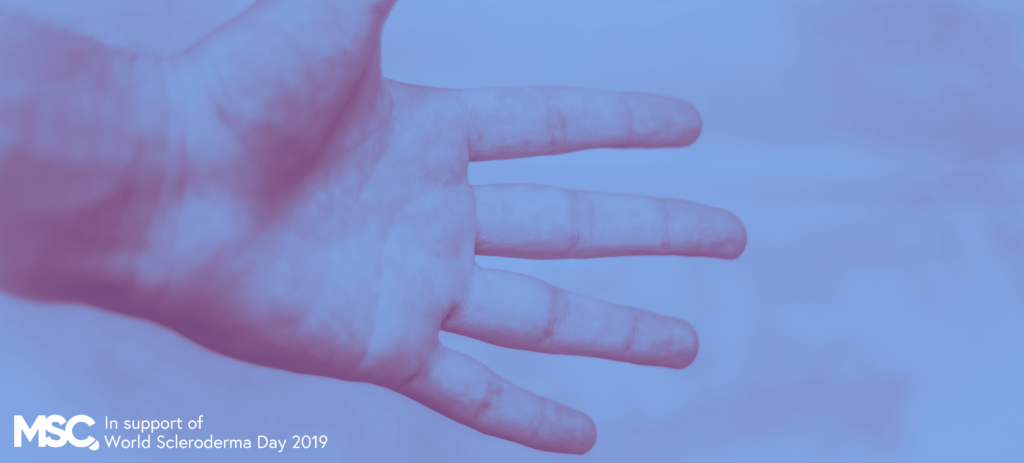
June 29 marks World Scleroderma Day, a day focused on letting everyone affected by Scleroderma know that they are not alone. While rare, this devastating disease is characterized by a scarring of the skin and internal organs, with consequences raging from mild and esthetical to death. Still, no treatments have been proven to affect the underlying disease process and thus, we decided to ask: what’s the deal with Scleroderma?
Scleroderma is a rare rheumatic disease characterized by fibrosis of the skin, internal organs and vasculopathy. It is estimated that around 2.5 million people in the world suffer from it, and depending on where the fibrosis occurs, symptoms varies from mild, such as localized skin thickening, to life-threatening, where manifestations of the disease include interstitial lung disease and renal failure. While the disease affect adults across the life spectrum, the peak age of onset is between 40 and 50 years of age and within three years of diagnosis, about 50 percent of patients have developed major internal organ complications or deceased. The median survival time after diagnosis is 11 years.
Scleroderma is usually divided into systemic scleroderma or systemic sclerosis, which is the most common form of the disease and terms often used interchangeably with scleroderma, and localized scleroderma, which is extremely rare. The difference between the two is that localized scleroderma typically is confined to a local patch of skin that is thickening and hardening, while Scleroderma, on the other hand, almost always has an element of internal organ disease.
Treatment
Today, there are no proven therapies for the underlying disease process. Instead, drugs that suppress the immune system, such as corticosteroids and methotrexate, are often used to treat patients with severe scleroderma symptoms. This is not entirely unproblematic, however, as a recent study suggests that such treatments should be used with caution in patients with lung disease – something that may affect up to 80% of all scleroderma patients.
Currently, there is only one Scleroderma targeted treatment on the market; Actelion Pharmaceutical’s Tracleer (bosentan), which is approved for the treatment of pulmonary arterial hypertension (PAH), including PAH in Scleroderma. However, the side effects of the treatment can be severe, including liver toxicity and birth defects. The morbidity and mortality of the disease thus remains high, and FDA has granted orphan drug designation for several drugs in development for the treatment of the disease.
Attention from Big Pharma
Over the past couple of years, there have been several breakthroughs in terms of the ability to treat specific internal organ complications, i.e. the effects of the disease rather than the underlying disease process. Still, the number of treatments in pipeline are relatively few and primarily centered around Phase 2. A number of Big Pharma players have however shown interest in the field, including Merck, Boehringer-Ingelheim, Sanofi, Novartis and Johnson & Johnson. This suggests both that a treatment of the disease process could be near and that anyone who can present such treatment could be able to catch the interest of some pretty big investors.




